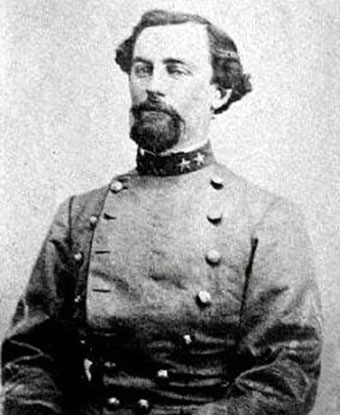Last updated: February 7, 2021
Person
Stephen Elliott Jr.

Wikimedia Commons
Born in Beaufort, South Carolina, on October 26, 1830, Stephen Elliott, Jr. was the eldest son of Rev. Stephen Elliott and Ann Hutson Habersham. He was educated at South Carolina College graduating in 1850. He became a planter and a successful fisherman, served in the South Carolina legislature, and was a captain in the Beaufort Volunteer Artillery militia. He married Charlotte Stuart in 1854 and fathered three children.
He began his service in the Confederate Army at the beginning of the Civil War in 1861 rising from captain to brigadier general. He initially saw action in the Charleston and Port Royal areas. Called to Charleston by General P.G.T. Beauregard, then Major Elliott was offered command of Fort Sumter to replace Colonel Alfred Rhett, who was moved to command the inner fortifications of Charleston. Elliott accepted and assumed command on the night of September 4, 1863.
At that point, Fort Sumter had been under bombardment by Union heavy Parrott rifles since August 17 firing from Morris Island. Following heavy fighting on the island since July 10, Confederate forces evacuated the island on the night of September 6. Union Rear Admiral John A. Dahlgren, commander of the blockade squadron, wasted no time. The next morning, he sent a message to Fort Sumter demanding its surrender. Elliott, having been in command of the fort only two days, checked with his superior, General Beauregard, and then replied, “Inform Admiral Dahlgren that he may have Fort Sumter when he can take it and hold it.” Upon receiving this reply, Dahlgren immediately ordered an amphibious assault on the fort to take place on the night of September 8.
At Fort Sumter, Elliott was quite aware of the impending attack, in part by intercepted signals between Union vessels decoded with a signal code book captured by the Confederates back in April unbeknownst to the US Navy. Thus, preparations to meet the attack were thorough and extensive. Inside the fort, Elliott and the Confederates manning the parapet and loopholes watched the Union boats approach holding their fire until the first boats began to land. A Confederate sentry hailed them loudly but received no reply. A few seconds later, a red signal rocket was fired by Elliott from Sumter, and all hell broke loose.
As the first few boats landed amidst the debris at the base of the walls, they were met with volleys of rifle fire, hand grenades, and bricks tossed from the debris. At the same time, exploding shells rained down from the Confederate shore batteries. Those who managed to disembark from their boats briefly tried to return fire but soon sought shelter among the debris at the base of the walls. Following boats were unable to land due to the heavy fire and soon turned away, leaving sailors and Marines stranded with no choice but to surrender. The fight was over in 20 minutes. The Union sailors and Marines suffered 127 casualties, the Confederates none.
Transferred to Petersburg, Virginia, Elliott took over command of fellow South Carolinian, Nathan G. Evans' former brigade in the Army of Northern Virginia. In his brigade's defense of the Confederate defenses around Petersburg, his men suffered heavy casualties in the fight after a Union mine blew up a portion of the Confederate line. The explosion stirred Elliott from sleep in a bombproof to find chaos around him. He was severely wounded in the Battle of the Crater and after recovering, he saw action at Averasboro and Bentonville, in which he was again badly wounded. His brigade surrendered at Bennett Place when General Joseph E. Johnston's Army of Tennessee surrendered to General William Tecumseh Sherman's in April 1865. Elliott had been sent home to convalesce following his wounding at Bentonville.
After the war, Elliott's plantation had been seized for non-payment of taxes, and the land was distributed amongst the freedmen. In November 1865, he received a full pardon from President Andew Johnson. He succumbed to his war wounds on February 21, 1866. He was only thirty five years old. He is buried at St Helena’s Episcopal Churchyard in Beaufort, South Carolina.
